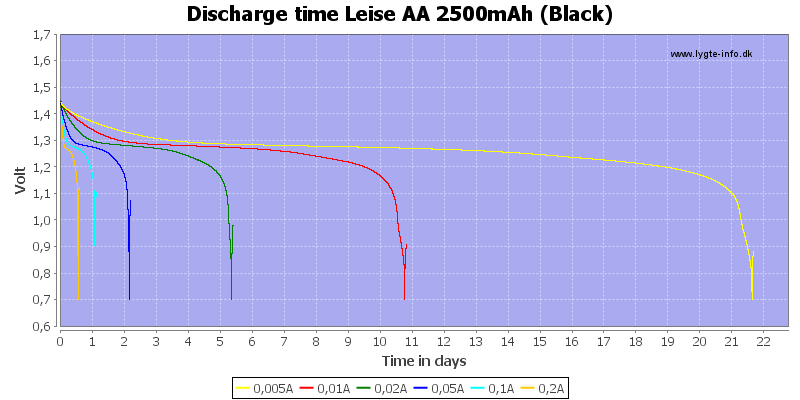Low current discharge of batteries part two

My usual battery tests uses a fairly high discharge current, but in many applications batteries will last for weeks or months with the device on. To get some better data for this I decided to do some low current discharges, i.e. with discharge times up to a few weeks. For this I will show capacity down to a couple of different voltages.
Due to the time involved I can only do it with a few batteries, other brands may be better or worse.
This is part two, part one can be found here and contains data for alkaline batteries (AA/AAA/9V/LR44) and CR2032
Content
AA, Kodak Super Heavy Duty (Carbon-Zinc)
AAA, Kodak Super Heavy Duty (Carbon-Zinc)
AA, Energizer Ultimate Lithium AA
AAA, Energizer Ultimate Lithium AAA
AA, Eneloop AA
AA, Eneloop AAA
AA, Leise NiMH 2500mAh
AA, Kodak Super Heavy Duty (Carbon-Zinc)

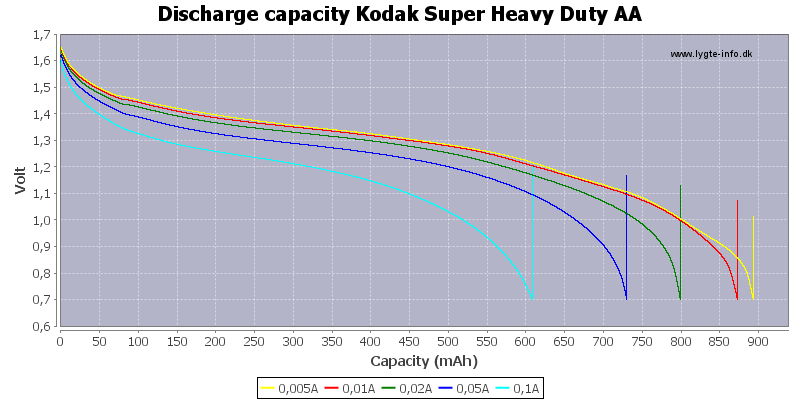
This is a old type of batteries with low capacity and it is not able to handle much current.
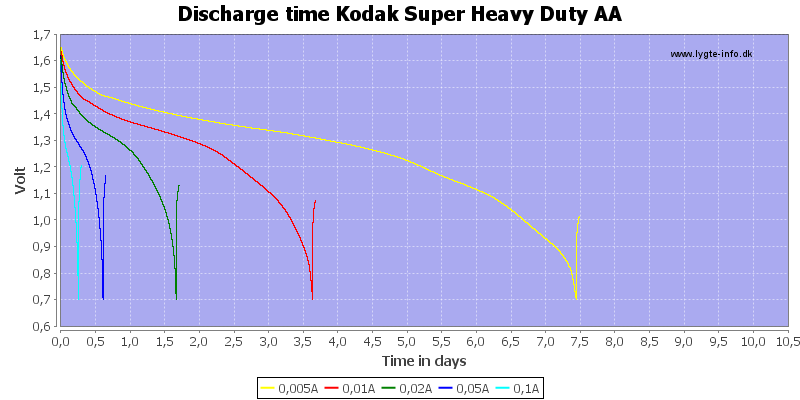
Where Alkaline could reach 3 weeks at 5mA, carbon-zinc is only about one week.

See part one for explanation on how to use the table.
AAA, Kodak Super Heavy Duty (Carbon-Zinc)

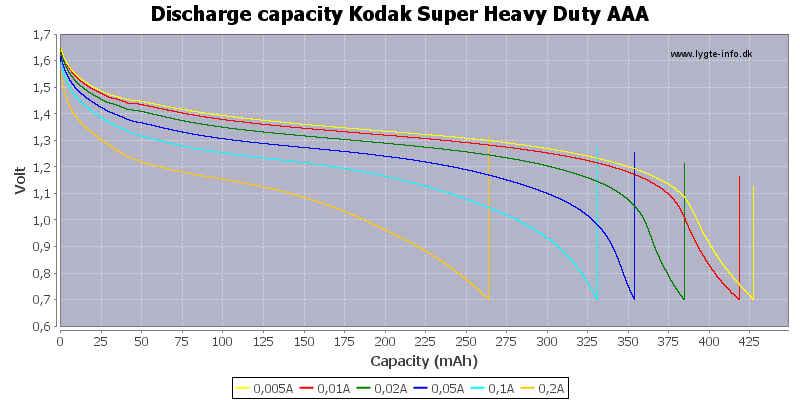
The smaller size is about 40% to 50% of the AA battery in capacity.
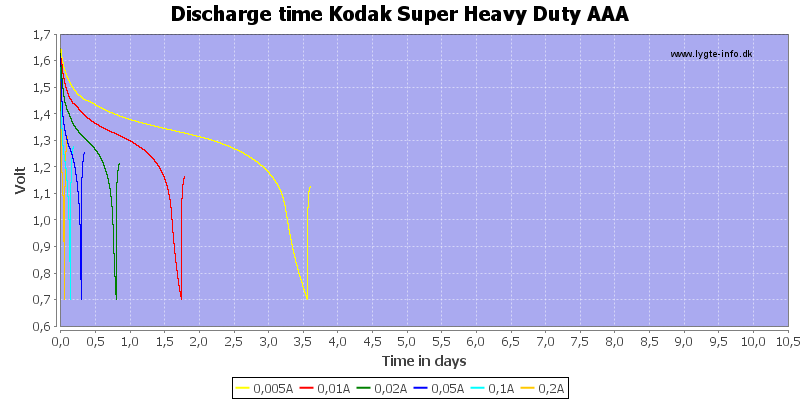

AA, Energizer Ultimate Lithium AA

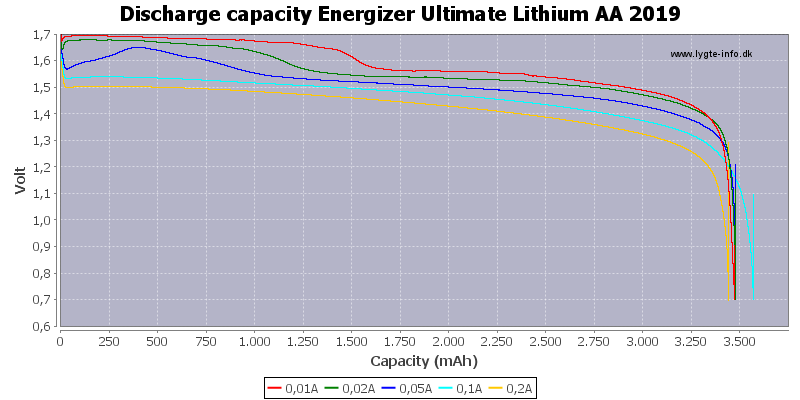
Lithium batteries have higher voltage than Alkaline/Carbon-Zinc/NiMH batteries.
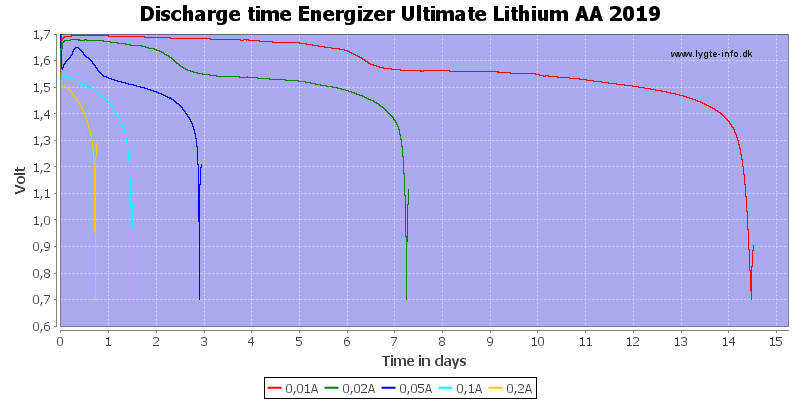
At low current the actual capacity is about the same as Alkaline, with increasing load the capacity stays the same.

AAA, Energizer Ultimate Lithium AAA


The AAA lithium cell also has the high voltage and a fairly constant capacity of 1300mAh
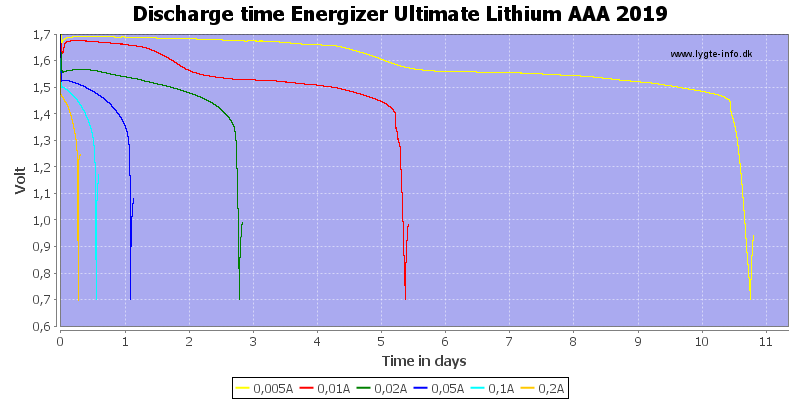

AA, Eneloop AA
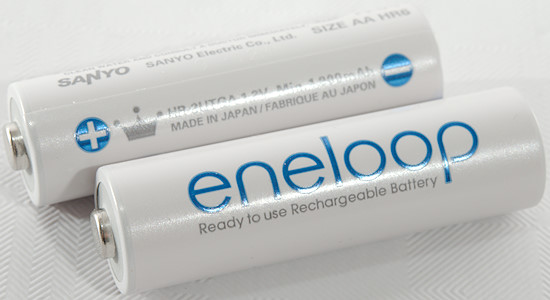
For testing Eneloop AA I used some old, but unused batteries I had.
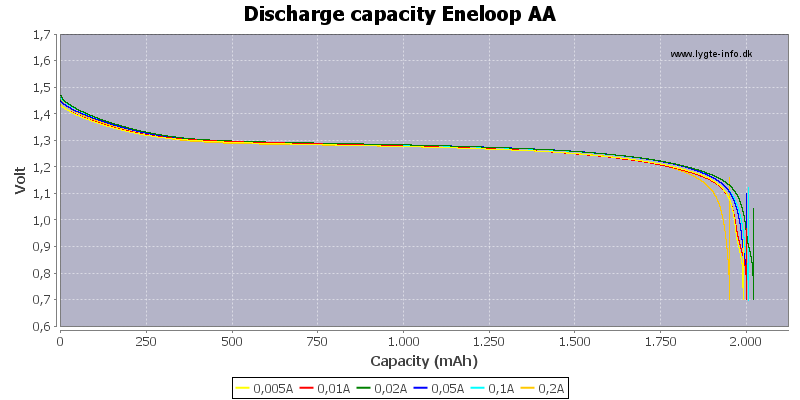
These curves are the reason I not do many low current test on NiMH batteries, the difference between 0.2A and 0.005A is very small. The time from battery drops below 1.2V to total empty is fairly short, i.e. there will not be much warning on a battery indicator.
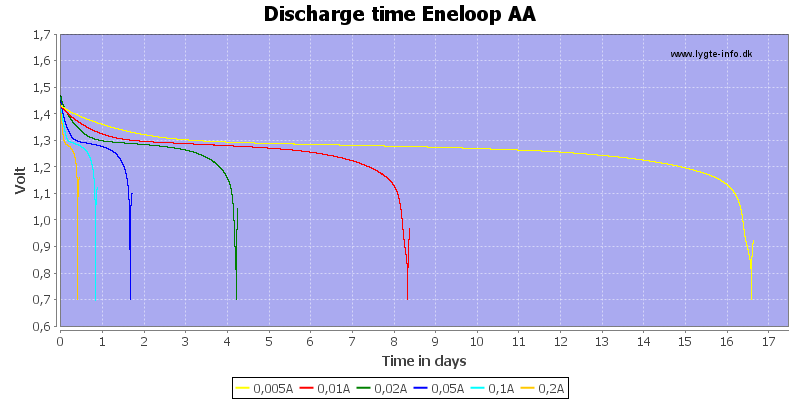
Here it is with a scale in days. With 5mA it is fairly easy to reach 2 weeks of continuous on time.

NiMH do not really work with devices that requires more than 1.2V from the batteries, with low drain devices alkaline can be used at a bit higher voltage (This, of course, means less capacity).
AA, Eneloop AAA
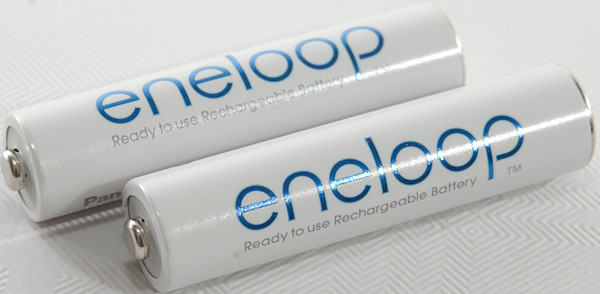
For testing Eneloop AAA I used a brand new AAA cell.

The AAA are also basically independent of discharge current.
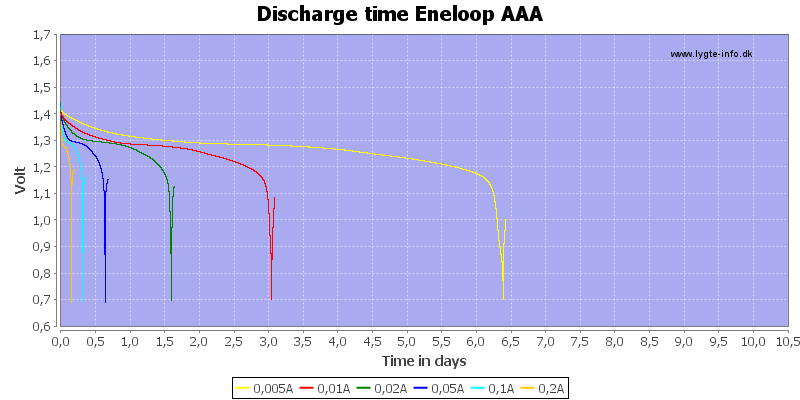
Here it is with a scale in days. With 5mA it is fairly easy to reach 6 days of continuous on time.

NiMH do not really work with devices that requires more than 1.2V from the batteries, with low drain devices alkaline can be used at a bit higher voltage (This, of course, means less capacity). For the 100mA track the battery was charged slightly higher or had less rest time before I moved it from the charger to the test station.
AA, Leise NiMH 2500mAh

These batteries has slightly lower charge voltage than eneloop, I wanted to see if the discharge voltage was lower also.
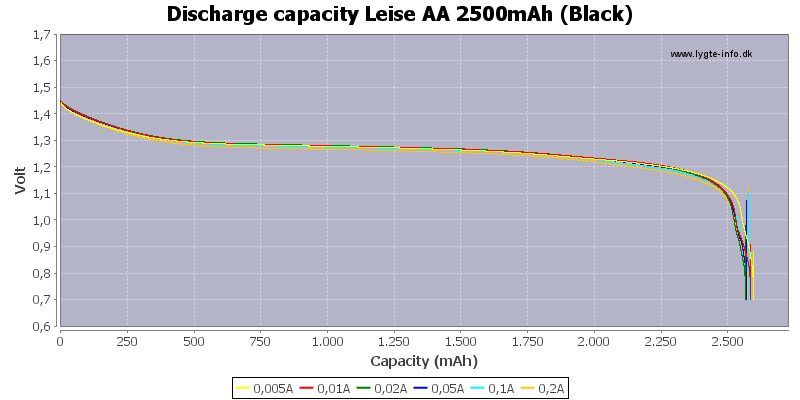
The discharge voltage is basically the same.
